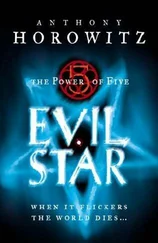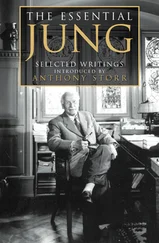Jones perfectly illustrates the difficulty in defining the borderlines between conviction, delusion, confidence trickery, and psychosis. Perhaps more overtly than any guru with whom I am concerned except Gurdjieff, Jones was a confidence trickster. He had no scruples about faking cures of illness, or himself pretending to collapse when it appeared desirable, or in inventing attacks from imagined enemies. He once broke a window and claimed that a brick on the floor had been thrown at him. Unfortunately for him, the absence of broken glass within the room demonstrated that the window had been broken from inside. In Jonestown, he claimed that enemies had fired at him, and produced bullets in evidence. In fact, his adopted son Jimmy had fired the shots, and was seen to do so by Vincent Lopez, whose punishment by forced eating of a hot pepper was referred to earlier. Jones was always inclined to suspect that he was being persecuted by agents of the United States Government including the Internal Revenue and the CIA, no doubt because he was in reality guilty of financial misdemeanours, and also because he outspokenly condemned the administration as fascist and racist. However, as he got older, his suspicions took on more and more the colouring of paranoid delusions, until, in Jonestown, his tediously long broadcast harangues amounted to the ramblings of a psychotic. This mental deterioration was undoubtedly promoted by the large quantities of drugs, including both amphetamines and anti-depressants, which he took for a variety of ailments, both real and imagined. During the 1970s, Jones drove home his paranoid message with increasing force. He alleged that the San Francisco authorities were preparing concentration camps for ethnic minorities and, by the mid-1970s, he had accumulated at least two hundred guns. In Jonestown, he added to this armoury by smuggling more weapons in crates containing machinery. These were generally obtained from the San Francisco Gun Exchange (or ‘Bible Exchange’ as it was known in Jonestown).
Jones began to announce himself as God around 1974. Before this, he had generally claimed to be a messenger from God with a divine gift of healing: later, he said, ‘I come as God socialist’. Drugs made him more inclined to claim divine status but how far he believed in his own divinity is an open question. According to the New Yorker of 22 November 1993, his wife Marceline tried to persuade their son Stephan to talk his father into giving up drugs. Stephan replied: ‘You’re talking about going to God and telling him he’s a drug addict?’
The inhabitants of Jonestown were well prepared in advance for their eventual death. Jones kept on telling them that he expected the settlement to be attacked by a variety of foes, and that if this happened, the only way out might be suicide. He announced that the community must exist together or die together rather than be split up. If death was to be the final solution, this would not be in vain, for it would vividly demonstrate to the world the evil nature of the U.S. Government. In spite of this, there is some doubt about how many people actually committed suicide and how many may have been murdered. Reports by survivors, and examination of the site of injection in the corpses suggest that more were murdered than was originally supposed. The sheer scale of the Jonestown disaster shocked the world; but tragic events of a similar kind have occurred since and more can certainly be expected.
Let us turn from Jonestown to Ranch Apocalypse. Vernon Howell, as Koresh was originally named, was born on August 17, 1959 to a fourteen-year-old girl. When her lover left her two years later, she placed the baby in the care of her mother and sister. In 1964, she married a former merchant seaman and reclaimed Vernon, telling him for the first time that she was his real mother. According to his own account, Vernon Howell did not get on with his stepfather, who frequently thrashed him. He did poorly at school, where he was put into a special class, and teased for being ‘retarded’. He also claimed that a group of older boys had raped him. He was said to have been dyslexic rather than mentally handicapped; but this does not seem to have prevented him from reading the Bible, since his mother stated that he knew the whole of the New Testament by heart by the age of twelve. Later, this slow learner was to boast that he had more knowledge than all the great scholars could learn in a lifetime.
This is certainly an unfortunate background, but others have suffered worse childhoods without becoming psychotic or monsters of cruelty. By the time he dropped out of school at the age of fourteen, Howell had attained success as an athlete and had overcome his early unpopularity. His reaction was to become arrogant and patronizing; attitudes which precluded his keeping many of the odd jobs which he attempted. Howell was always hypersensitive to rejection, as was Jim Jones. At the age of nineteen, a sixteen-year-old girl whom he had got pregnant refused to live with him on the grounds that he was unfit to bring up a child. This shattered his confidence, and he began to suffer from mood swings of pathological intensity, sometimes believing himself to be uniquely evil, sometimes thinking that he was especially favoured by God. After various abortive attempts to find consolation in religion, Howell joined the Seventh Day Adventist Church in Tyler, Texas, and was baptized in 1979. He became infatuated with the pastor’s daughter, claiming that God had spoken to him in a vision and said that he would give the girl to him. Howell’s behaviour became so outrageous that, in 1981, the pastor and his congregation expelled him.
Howell’s reaction to these rejections is interesting, and follows the pattern of stress or illness succeeded by a new vision which is characteristic of most gurus. His initial periods of depression were succeeded by an ever mounting confidence that he had been specially selected by God; a conviction which may have been reinforced by the drug LSD, which he started to use in his late teens. Following his expulsion from the official Seventh Day Adventist Church, Howell joined a splinter group called the Branch Davidian Seventh Day Adventists. The story of how he became leader of this sect can be read in David Leppard’s book, Fire and Blood , but need not detain us here. In 1988, Koresh managed to establish himself and his followers on a site originally called the New Mount Carmel Center, which occupied some seventy-seven acres ten miles east of Waco, Texas. Within four years, Howell, who had now changed his name to David Koresh, had established a regime closely resembling that instituted by Jim Jones in Guyana. With the aid of his associate, Marc Breault, whose home was in Hawaii, a number of rich businessmen were persuaded to finance the cult. The funds raised were used by Koresh for two main purposes: musical equipment to further his ambition of becoming a rock star, and weapons to protect his cult against enemies. By the time the cult was being investigated by the U.S. authorities, Koresh had spent around $200,000 on weapons. 6His annual income amounted to about $500,000. It was because a delivery man reported that pineapple hand grenades were being delivered to Koresh’s commune that the train of events which culminated in its siege by the FBI and its ultimate destruction by fire was set in motion.
Koresh resembled Jim Jones in being a fluent speaker who could hold his listeners for hours at a time. Jones’s vision was of a communist society in which private property was abolished and racial equality established. Koresh’s vision was apocalyptic. As other apocalyptic prophets have done, Koresh laid hold upon the Book of Revelation and claimed that he alone could interpret it correctly. He especially emphasized his unique insight into the Seven Seals. According to David Leppard, Koresh said: ‘If you don’t know the Seven Seals, you really don’t know Christ … The Seven Seals are the acid test for who knows God and who doesn’t.’ 7
Читать дальше











